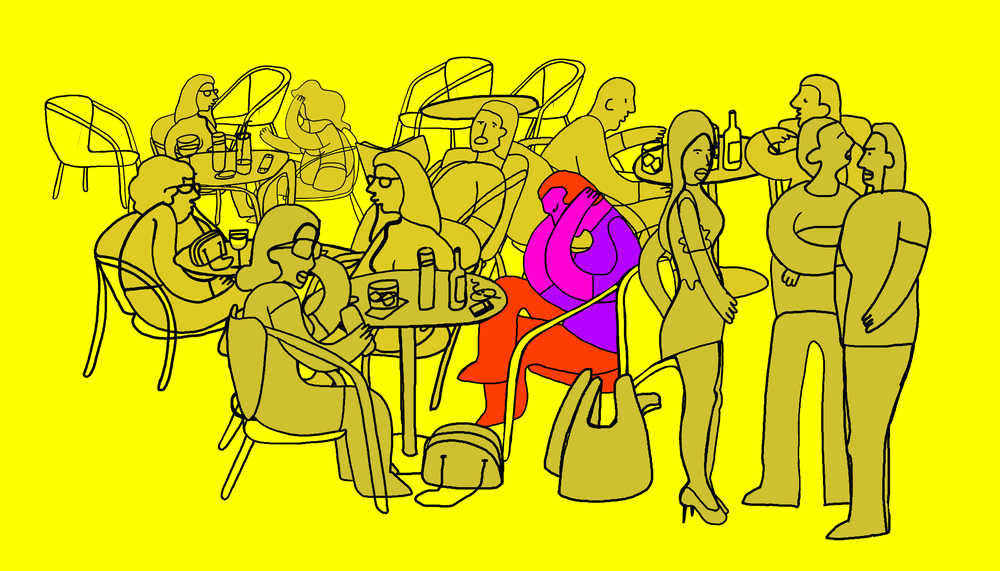Approximately 18% of people in the United States live with an anxiety condition each year. This means that each and every day, roughly 40 million people go through their daily routine coping with a high degree of stress and anxiety. Many of these people might have what we consider “high-functioning anxiety.”
Psychology is often most concerned with function or dysfunction. Medicine overall looks at illness or diagnosis as a problem (pathology) to be solved. In the past, the mental health community has also viewed mental illnesses as pathology, but as more research has been done and the knowledge of mental health professionals has increased, we’ve come to understand that many mental health conditions exist on a continuum of functioning. Updates to the Diagnostic and Statistical Manual of Mental Disorders, 5th Edition (DSM V) captures this ongoing shift in thinking
This means that, as therapists, we are not just concerned about whether or not a client may have an anxiety disorder, but also how that condition might be posing a challenge for our individual clients. Now we focus on the intensity and frequency of symptoms rather than simply a diagnosis alone. This has helped illuminate, and better understand, what it may look like to live with a high-functioning anxiety condition.
What Does High-Functioning Anxiety Mean?
The term “high-functioning anxiety” generally refers to someone who functions well enough to fulfill the obligations required by career and relationships to keep moving forward in their lives. As an example, those with high functioning anxiety likely won’t experience inpatient hospitalization, but may seek out ongoing outpatient therapy to learn skills to best help them manage their symptoms.
By contrast, someone who deals with more intense anxiety might experience hospitalization. They might also experience panic attacks or anxiety attacks so intensely that they continually miss deadlines at work or school, or must regularly take sick days (or temporary disability) to recover and better manage their condition.
What Does High-Functioning Anxiety Actually Look Like?
Consider this example.
Joan is generally satisfied with her life. She has a great social and family life that brings her joy. She loves spending time with her kids and partner on the weekends, visiting a park close to her home. Things at home are going pretty well.
Joan’s biggest source of stress right now is work. She was thrilled to receive a promotion two months ago, but is finding the workload hard to keep up with. She’s had to quickly learn a lot of new skills. On her daily commute to work she can feel her anxiety rising. Previously, she was considered a star employee in her department, but since the promotion she’s missed deadlines and feels like she continually lives in a brain fog. This makes it hard to get her work done.
Her coworkers have noticed that she spaces out in meetings and has talked about feeling undeserving of her new role. The anxiety Joan experiences at work causes her to worry constantly about work projects, even when she’s not there. She regularly has trouble sleeping, often waking up in the middle of the night thinking about tasks for the next day. She’s nervous about a performance review coming up in the next few months — the first following her recent promotion.
Based on the scenario presented here, would you say that Joan has high- or low-functioning anxiety?
If you said high functioning anxiety, you’d be right. While Joan’s life is clearly disrupted by her anxiety about work, she generally feels good about and in control of most areas of her life. The anxiety is specific to one area and she can work with a therapist to learn skills to manage her anxiety to get back to her normal, confident self.
On the other hand, if Joan’s condition worsens she may find herself completely overworked and tapped out. If she starts to consistently miss days from work due to feeling overwhelmed, or experiencing panic or anxiety attacks so severe that they kept her from working, then we may look at Joan’s situation a bit differently.
In either situation, the path forward for Joan could include the support and care of a therapist. As she notices the signs of disruption in her sleep and her ongoing worry, Joan could reach out to a therapist to learn skills to better manage both concerns. She might also learn ways to advocate for herself or manage her workload differently. She may or may not use medication or a host of other tools to help her feel better.
Early Intervention is Key
One important thing to remember is, like for all of us, high functioning anxiety can turn into something a lot more disruptive without proper treatment and support. What once was slightly disruptive can lead to more dire consequences if left unaddressed.
Joan’s story is just one example of how a person can live with high-functioning anxiety and still greatly benefit from therapy. Everyone needs help sometimes and reaching out early on can help prevent high-functioning anxiety from becoming something much worse.
Originally published on Talkspace.
More from Talkspace:
What to Expect From Your First Online Therapy Experience
How To Maintain Independence While in a Relationship
5 Signs of Acute Stress Disorder
Follow us here and subscribe here for all the latest news on how you can keep Thriving.
Stay up to date or catch-up on all our podcasts with Arianna Huffington here.


